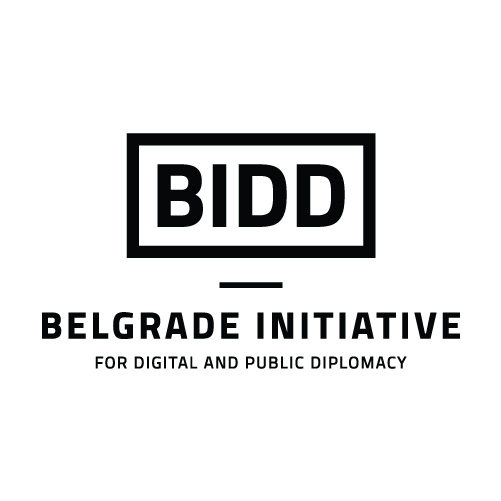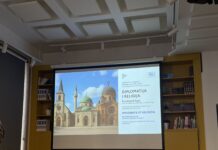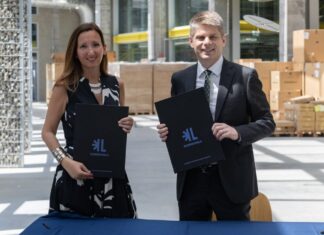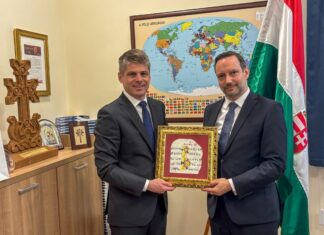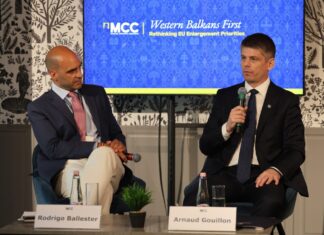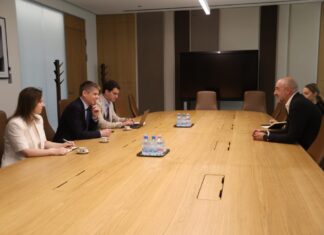How does the Serbian government cope with the problem of brain drain today?
 The latest OECD publication, SOPEMI 2014 shows that 39 thousand persons emigrated in 2012 from Serbia to OECD countries only. (At the beginning of the global economic and financial crisis, the emigration from Serbia to OECD countries amounted to 27,000 in 2008.) Thus, in 2012 Serbia was on 37th position (rank) in the world among the 50 countries with the largest emigration. In relation to the total population, Serbia was on the 9th place with 5,354 emigrants per million inhabitants (2012). Therefore, Serbia still has difficulties in setting up clear mechanisms to keep its talents in the country. The reason why young people are leaving include high unemployment rate, low income, and uncertainty concerning the future. Serbia is unable to provide a sufficient development perspective to its youth.
The latest OECD publication, SOPEMI 2014 shows that 39 thousand persons emigrated in 2012 from Serbia to OECD countries only. (At the beginning of the global economic and financial crisis, the emigration from Serbia to OECD countries amounted to 27,000 in 2008.) Thus, in 2012 Serbia was on 37th position (rank) in the world among the 50 countries with the largest emigration. In relation to the total population, Serbia was on the 9th place with 5,354 emigrants per million inhabitants (2012). Therefore, Serbia still has difficulties in setting up clear mechanisms to keep its talents in the country. The reason why young people are leaving include high unemployment rate, low income, and uncertainty concerning the future. Serbia is unable to provide a sufficient development perspective to its youth.
What can be done to improve the things?
Generally speaking, the spiritus movens of contemporary economic and social progress is mainly the economy of ideas and creativity. The key factors of this new economy are education, research and innovation. To achieve competitiveness in an increasingly global economic environment it is necessary to ensure an adequate supply and quality of the workforce in the field of research and development. As Serbia is determined to join the developed world, the key to its future success in the global marketplace will be its ability to be more creative and innovative. Unfortunately, in the last two decades Serbia’s brain drain has been quite massive. Talents remain an important component of countries’ and businesses’ long-term competitiveness.
The question of how they develop, retain and attract talent should therefore remain high on the agenda of policymakers and business leaders for the foreseeable future in Serbia.
 Serbia should pay special attention to their own capacities to retain and attract talent from the Serbian Diaspora. According to the Prof. Grečić opinion, the concept Diaspora as part of their home country implies that members of the Diaspora should be included in everyday activities in the home country without necessarily moving into it or even without membership in a particular Diaspora organization. The idea of the Diaspora “as a province of a country” means the concept of well-organized relations between the home country and the Diaspora in terms of “relatively homogeneous continent.” A sustainable macro-economic, political and social stability stimulate the development of regional and sectoral clusters. It is undisputed that the mass international migration is cause and consequence of globalization, but its effects on the countries of origin of migrants depend, to a large extent, on internal factors in these countries; depend on their institutions – the efficiency of its, and construction of its own institutions
Serbia should pay special attention to their own capacities to retain and attract talent from the Serbian Diaspora. According to the Prof. Grečić opinion, the concept Diaspora as part of their home country implies that members of the Diaspora should be included in everyday activities in the home country without necessarily moving into it or even without membership in a particular Diaspora organization. The idea of the Diaspora “as a province of a country” means the concept of well-organized relations between the home country and the Diaspora in terms of “relatively homogeneous continent.” A sustainable macro-economic, political and social stability stimulate the development of regional and sectoral clusters. It is undisputed that the mass international migration is cause and consequence of globalization, but its effects on the countries of origin of migrants depend, to a large extent, on internal factors in these countries; depend on their institutions – the efficiency of its, and construction of its own institutions
The factors that determine the capacity retention of talent
Creation of a political framework and overall conditions for engaging talent sets are an imperative. In research and development must invest much much more. Investments not only in cash but also in commitment to the issues in question. The focus should be directed to contribute Serbian talents, innovative system of the country and the ways of their cooperation with colleagues in the field of science and technology from abroad. In terms of practical suggestions for policy makers, this approach can be summarized as follows: focus on individuals with high achievements; (b) the formation of the leadership group from the Diaspora; (c) incentives for the formation of partnerships between Diaspora groups and local reform-oriented agency; (d) support initiatives from the Diaspora, who have clearly defined projects and identifiable results; (e) emphasis on quality of projects from Diaspora than in its quantity, and (f) maintaining a balance between the volume of resources targeted to support projects from the Diaspora and the strength and depth of leadership groups from the Diaspora
The Strategy of Science and Technological development of the Republic of Serbia rightfully emphasizes the importance of talents. However, the resources assigned for research and development are too small. It is worth mentioning that the major pillars of Serbia`s long-term development should be (a) a better use of talents: keeping talents in the country and attracting talents from the Diaspora should lead to innovation, which will contribute to increased competitiveness; (b) adequate institutions: building institutions in order to facilitate the achievement of these goals (Figure 1 made by Yevgeny Kuznetsov illustrates a hierarchy of Diaspora impacts, starting from remittances (subsistence agenda) at the base of the pyramid to institutional reform (self actualization agenda) at its pinnacle); (c) better human capital management. The implementation of this strategy requires designing a return program, and the drafting of concrete, `distance` cooperation projects with the Diaspora. Specialized and distinguished experts from the Diaspora are expected to bring to the country, in addition to knowledge, an entrepreneurial spirit, scientific and business contacts, and new initiatives.
Therefore, in order to successfully carry the concept of development set for 2020 in Serbia, it is crucial to meet two preconditions: (1) Institutional reforms, including constitutional and legal reform, judicial, public administration and security system reform, which would help Serbia become a factor of stability in the region (2) Building infrastructure and defining the spatial development of Serbia in order to create preconditions for sustainable economic growth and development
How Serbian society might be affected in the future if brain drain continues?
 The different data speak to the fact that Serbia receives a better educational structure among those who leave their borders, than among those who stay in. This is an enormous challenge for a country like Serbia. It will be problem for Serbian labour market in the years to come. As a matter of fact, the largest number of graduates leave with university degrees in Economics, Medicine, Dentistry and Electrical Engineering. The paradox is that Serbian labour market is desperate for these professionals too. Unemployment is very high. Over one-fifth of the unemployed in Serbia were with higher education at the beginning of 2015. The only thing that could retain professionals is a job. However, the lack of connection between the labor market and the education system is a problem that has been identified in numerous experts analyzes. Bearing in mind the structural unemployment in Serbia, it is obvious that all serious attempts at solving the problem of incompatibility of education with labor market needs are passed without any significant results. Knowledge and appropriate skills are a precondition for the creation of a knowledge society, increased productivity and competitiveness of the economy These circumstances may impact Serbia’s future development and its labor market. Although the situation is rather difficult, there are a lot of projects focusing on brain gain.
The different data speak to the fact that Serbia receives a better educational structure among those who leave their borders, than among those who stay in. This is an enormous challenge for a country like Serbia. It will be problem for Serbian labour market in the years to come. As a matter of fact, the largest number of graduates leave with university degrees in Economics, Medicine, Dentistry and Electrical Engineering. The paradox is that Serbian labour market is desperate for these professionals too. Unemployment is very high. Over one-fifth of the unemployed in Serbia were with higher education at the beginning of 2015. The only thing that could retain professionals is a job. However, the lack of connection between the labor market and the education system is a problem that has been identified in numerous experts analyzes. Bearing in mind the structural unemployment in Serbia, it is obvious that all serious attempts at solving the problem of incompatibility of education with labor market needs are passed without any significant results. Knowledge and appropriate skills are a precondition for the creation of a knowledge society, increased productivity and competitiveness of the economy These circumstances may impact Serbia’s future development and its labor market. Although the situation is rather difficult, there are a lot of projects focusing on brain gain.
In the last decade, Serbian ministries created different strategies dealing with brain gain, among most important was the Strategy of Scientific and Technological Development of Serbia 2010-2015, the Strategy to Preserve and Strengthen the Relationship between Homeland and Diaspora, as well as Homeland and the Serbs in the Region (Ministry for Diaspora) and the Migration Management Strategy (Commissariat for Refugees). However, the implementation of the strategies was wrong. Besides, concerns about the actual return of the highly qualified young people back to Serbia should be addressed. The goal should be to stimulate the mobility of highly educated people and professionals preventing, at the same time, their outflow. In order to achieve this, it is not sufficient to encourage their return only in a symbolic way but also to provide all necessary conditions for the returnees’ inclusion into the labour market.
Vladimir Grečić, Professor of Labour Economics
